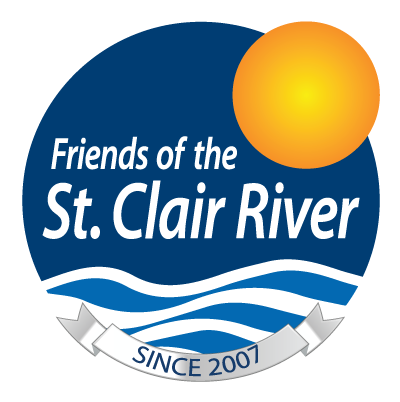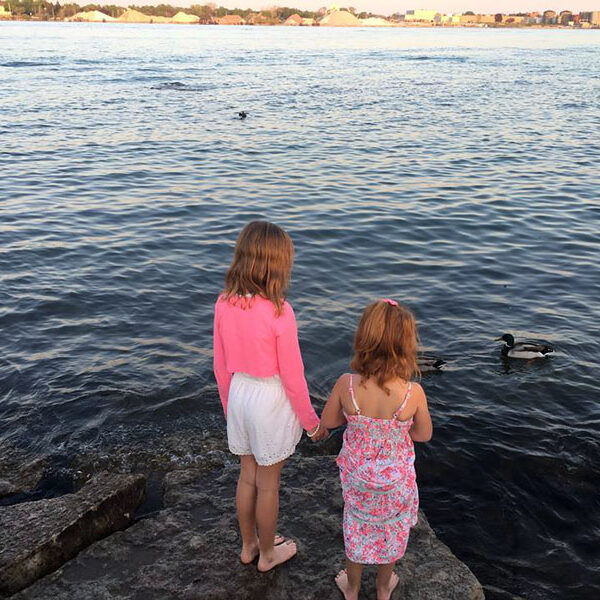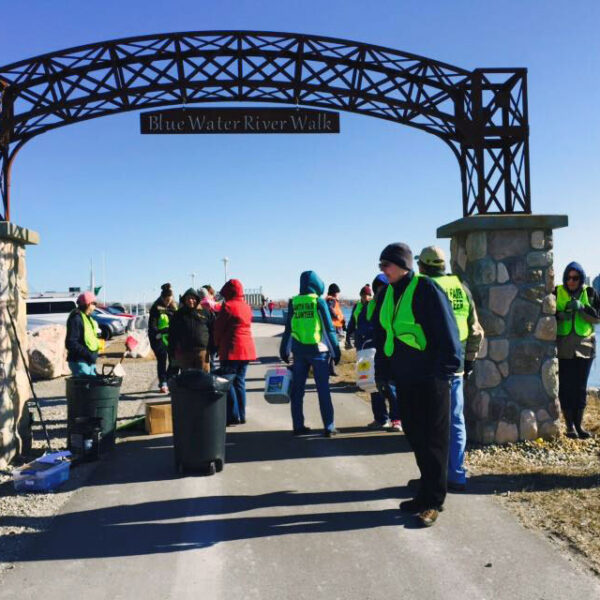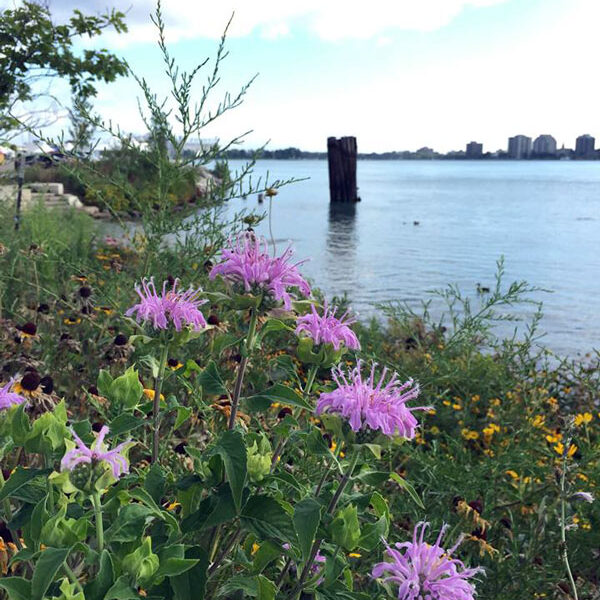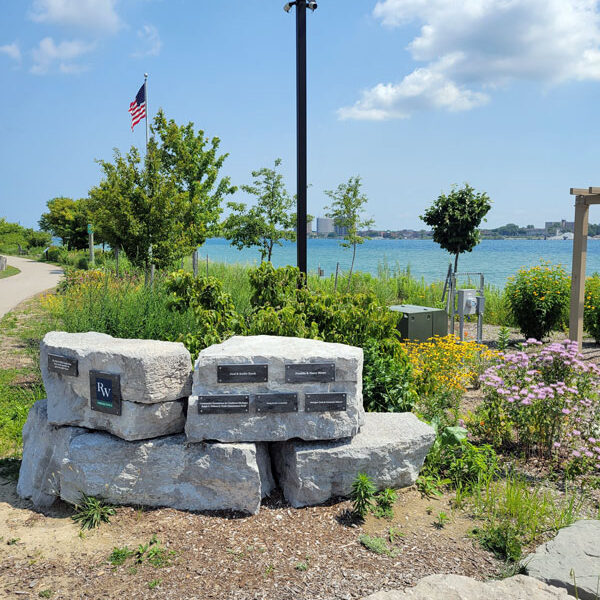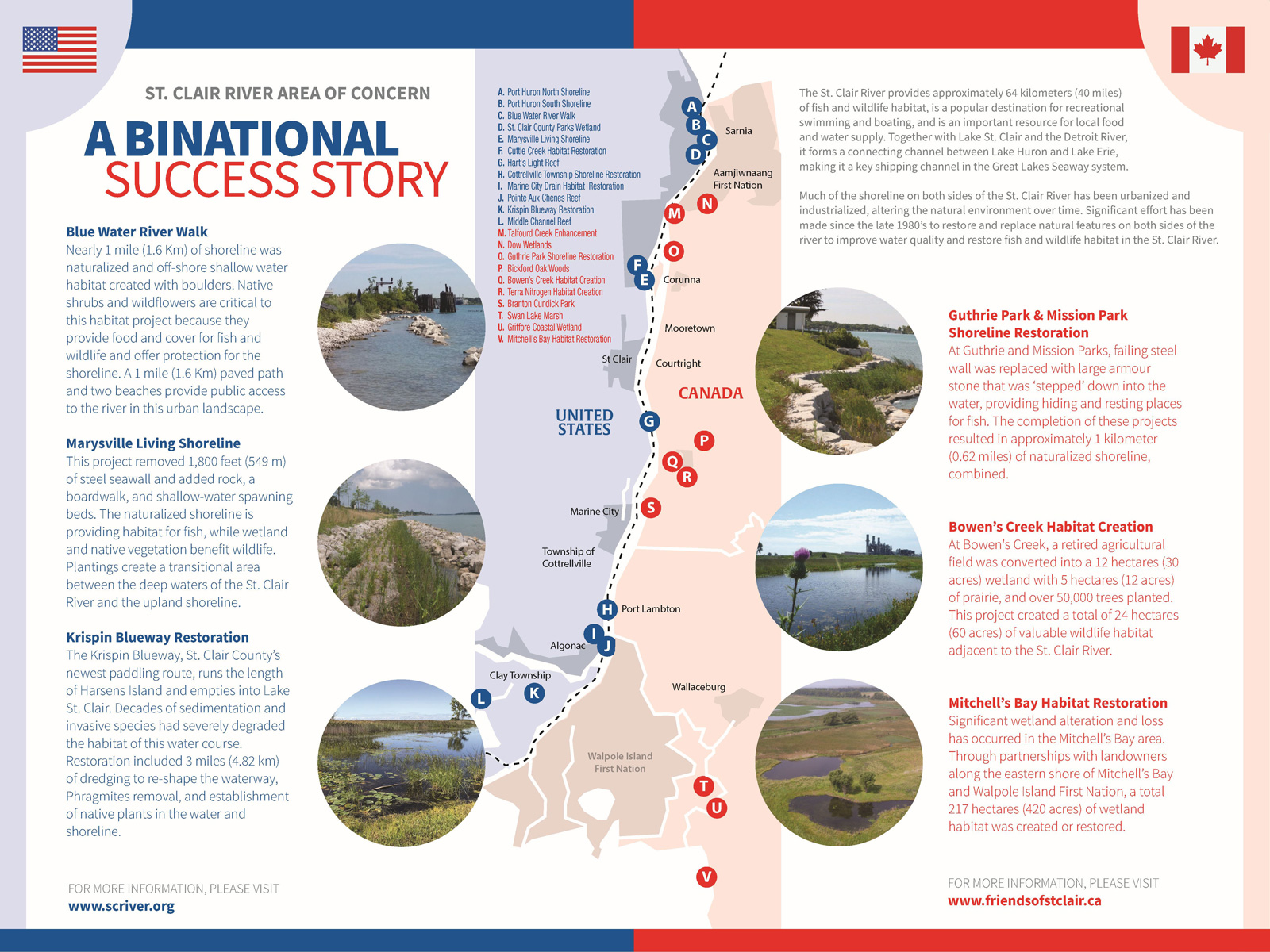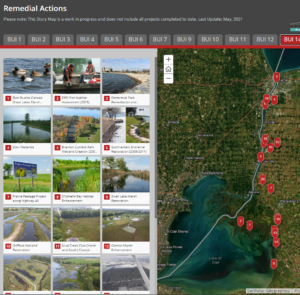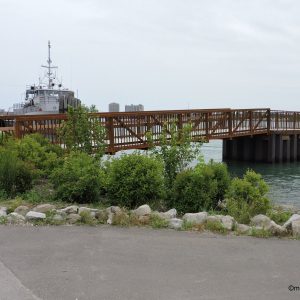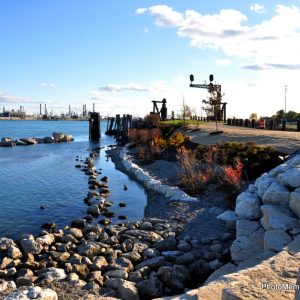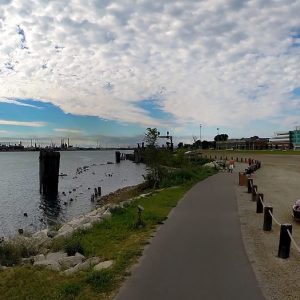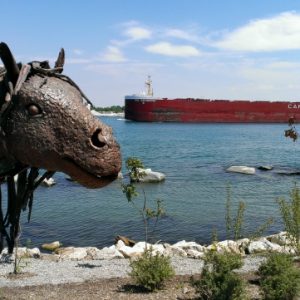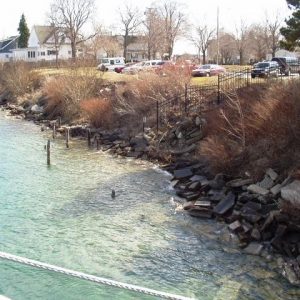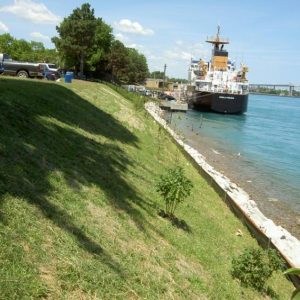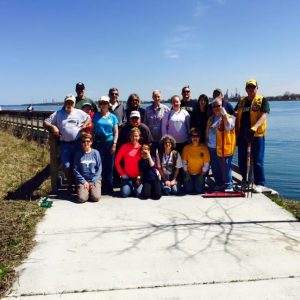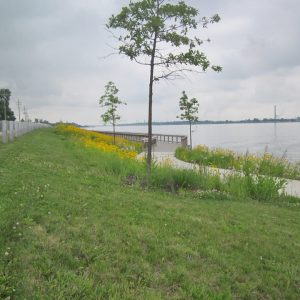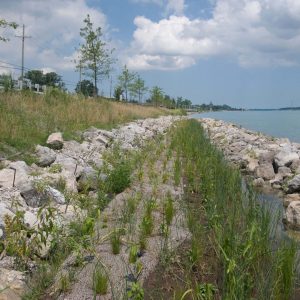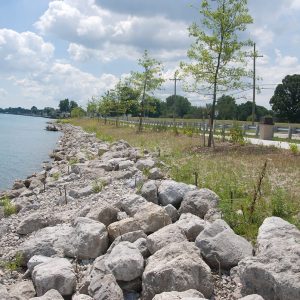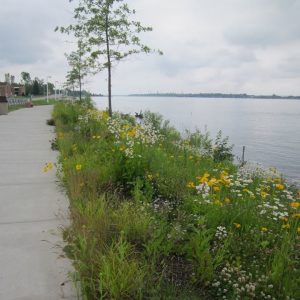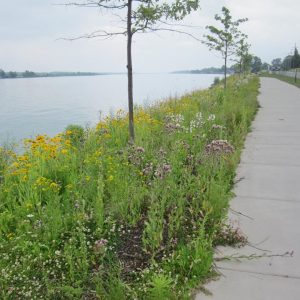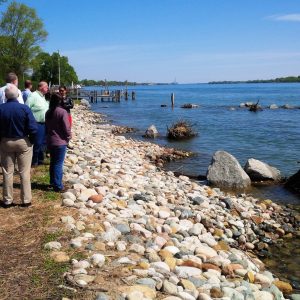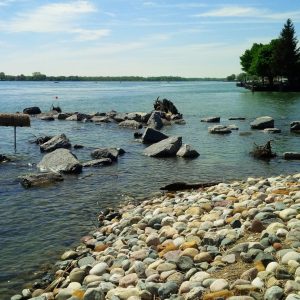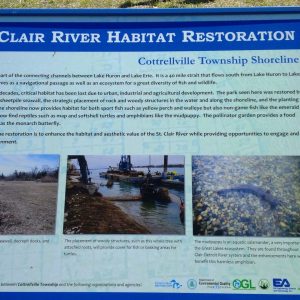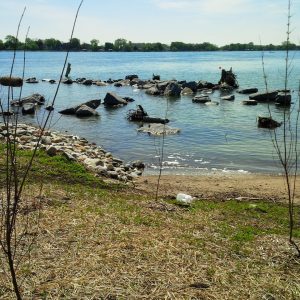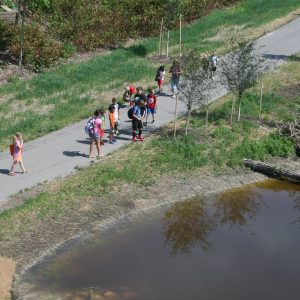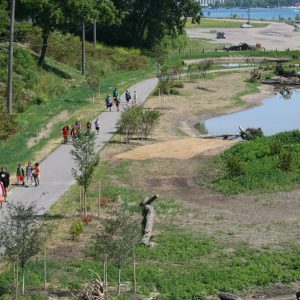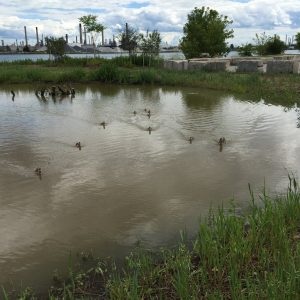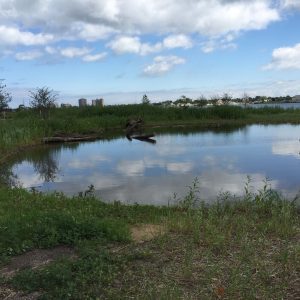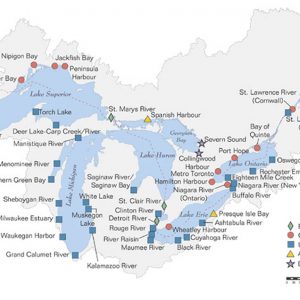Area of Concern
The Great Lakes are a unique natural resource containing 20 percent of the world’s fresh surface water. These lakes form part of the international boundary between Canada and the United States. In order to protect water resources, address problems along their common border, and enhance water quality, the United States and Canada enacted the Boundary Waters Treaty of 1909 and subsequently established the International Joint Commission to implement the treaty.
In 1988, the International Joint Commission identified forty-three specific locations in the Great Lakes where action was needed to control and cleanup pollution. The St. Clair River is one of these areas, known as an Area of Concern. The St. Clair River was listed as an Area of Concern because of significant historical pollution problems. Thirty years later, the St. Clair River still remains an Area of Concern.
Each Great Lake and their rivers have fourteen protected Beneficial Uses by the U.S. and Canadian governments. The St. Clair River had ten impaired Beneficial Uses, but through almost three decades of collaborative efforts, conditions in the St. Clair River are improving. Today only six Beneficial Uses are impaired, with two anticipating removal in 2015. The goal is to have the St. Clair River delisted as an Area of Concern in 2019.
Jump to Section:
Dive Into St. Clair River Drinking Water
Restrictions on Drinking Water Consumption, Taste or Odor Problems, due to spills that have the potential to contaminate the river water requiring the shutdown of the drinking water intake facilities.
It is important to note the drinking water supplied by the water filtration facilities, using the St. Clair River as source water, have always met and/or exceeded all Federal and State drinking water guidelines. The St. Clair River Area of Concern impairment exists only because of the potential for contamination from spills and the need to shutdown facilities to avoid contamination.
St. Clair River Projects
In 2009, the first-ever, large-scale financial commitment to address persistent & historical environmental problems in the Great Lakes. This program, known as the Great Lakes Restoration Initiative, was funded at $475 million in 2010. The St. Clair River has benefited greatly from numerous projects funded under this initiative. In addition to the five fish and wildlife habitat projects currently underway, Great Lakes Restoration Initiative money has been used for other projects in the St. Clair River, including the following....
Blue Water River Walk
This major habitat restoration project along the St. Clair River in Port Huron began in 2010. Desmond Landing started out as a mile-long stretch of industrial wasteland, but when this project finished in June 2014, it became a beautiful shoreline with suitable habitat for fish and wildlife. With a restored and naturalized shoreline, the River Walk is safer and has more places for public to access the water in this primarily urban landscape. Native plants are critical to this habitat project in that they will produce the most suitable habitat for native fish and wildlife and offer protection for the shoreline. This is one of nine projects completed under the “DELISTING TARGETS FOR LOSS OF FISH & WILDLIFE HABITAT BENEFICIAL USE IMPAIRMENT OF THE ST. CLAIR RIVER AREA OF CONCERN” that gets us one step closer to removing this BUI from the St. Clair River.
Maintaining a beautiful shoreline by keeping invasive plants in check so that native plants can flourish is an ongoing project.
Blue Water River Walk Fact Sheet
St. Clair Community Foundation Blue Water River Walk website
Port Huron North
Near Pine Grove Park, just south of the Hollyhock, the shoreline restoration was completed in 2012. The project was led by the city of Port Huron.
See Fact Sheet- BEFORE
- AFTER
Marysville's Living Shoreline
The City of Marysville’s Living Shoreline Restoration Project competed against 1,000 other applicants to become one of the 270 projects funded under the Great Lakes Restoration Initiative, and in 2012 the project was completed on the banks of the St. Clair River. This project involved habitat restoration and establishing native plant life. To accomplish this, a total of 1,885 feet of steel seawall was removed and replaced with a reinforced rocky shoreline creating a more naturalized shoreline. The design included seawall removal, an elevated improved boardwalk, emergent and submergent wetland vegetation, native plants, gravel and cobble beds in the water, and riprap bank protection. The rocky shores provide spawning and nursery habitat for fish, while wetland and upland prairie vegetation benefit birds and other wildlife. Additional plantings create a transitional area between the deep waters of the St. Clair River and the upland areas along the shore. This is one of nine projects completed under the “DELISTING TARGETS FOR LOSS OF FISH & WILDLIFE HABITAT BENEFICIAL USE IMPAIRMENT OF THE ST. CLAIR RIVER AREA OF CONCERN” that gets us one step closer to removing this BUI from the St. Clair River.
Marysville Fact Sheet 1Marysville Fact Sheet 2
In-River Habitat Restoration
These artificial reef habitats for fish are in the St. Clair River near Algonac. At least one habitat was finished in 2013. Two reef habitats were completed in summer 2014 near Algonac Hart’s Light at Marine City.
Reef Creation Photo Album
Restoration Project Update
Restoring Fish Habitat in the St. Clair River Fact Sheet
The Wetlands at Blue Water River Walk County Park
GLRI money also is helping to finance wetland construction at the south end of the Blue Water River Walk which will become St. Clair County Park and Recreation’s newest county park.
Harsen’s Island Krispin Blueway Habitat Restoration Project
St. Clair River Restoration Partner Award
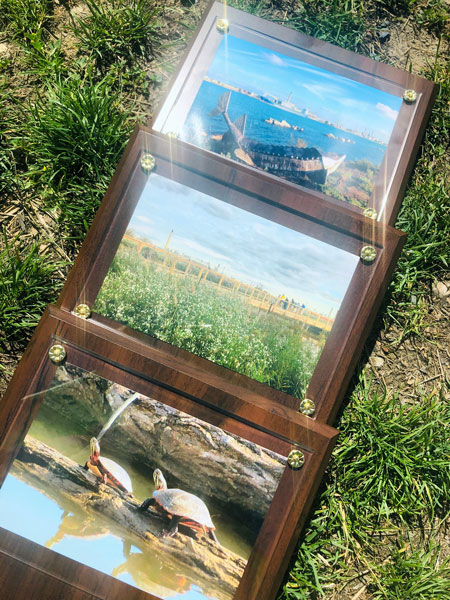
We recognize it takes an international community to be the guardians of the St. Clair River. Here on it’s shores, we’re celebrating the role of our partners in the success we’ve had over 30 years to restore, protect and enhance the St. Clair River.
Successful restoration work for the St. Clair River Area of Concern has been accomplished due to many partner’s leadership, as well as from government agencies, First Nations, the Binational Public Advisory Council, municipalities, industry, and hundreds of dedicated volunteers.
In the late 1980’s when the St. Clair River was designated an Area of Concern we started with ten impairments. These affected the health and quality of the water for fishing, swimming and drinking. Today we have just two impairments remaining.
As we continue our Area of Concern work to improve and protect the St. Clair River, it’s important we recognize our partners and share their success story. Each plays an important role in safeguarding this resource. We are very grateful to all of our partners and especially for their valuable contributions.
Their hard work and collaboration are an example of how community investment can create healthy, environmentally successful places and are a significant step towards delisting the St. Clair River as an Area of Concern. With their help, we continue to restore this magnificent river and its ecosystem.
Watch the award presentations by searching “Friends of the St. Clair River” on YouTube or visit our YouTube Channel.2020 Award Recipients
The Blueways of St. Clair is a program of the St. Clair County Metropolitan Planning Commission and has been primarily the work of one woman, Lori Eschenburg. Lori is a pioneer and champion for promoting St. Clair County’s first Blueways Trail System and Michigan’s first National Water Trail. She has taken water trails from its infancy to a successful program with a collection of 17 mapped water trails. Blueways brings people in connection with rivers, which fosters the appreciation for and protection of this magnificent resource. This has gone a long way towards developing political support and gaining funding for trail improvements.
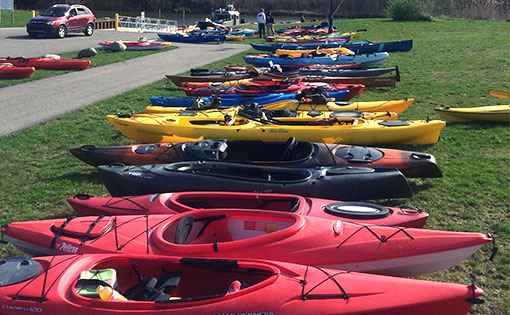
HRM has been instrumental in evaluating many habitat restoration projects on the St. Clair River. They performed ecological monitoring before, during and after many of the area’s most successful wildlife habitat restoration projects. They designed, installed and consulted on creature features such as frog and snake hibernacula, near shore mudpuppy habitat, and fish and bird elements. They have elevated St. Clair River restoration work, allowing us to highlight and promote our area’s unique features.
David Mifsud, Director and Founder of HRM, shared: "Thank you so much for this incredible honor! Working on St. Clair River restoration projects has been a very rewarding and educational experience that I carry with me. I vividly remember the Area of Concern meeting when Rose Ellison introduced me to folks planning to pilot a restoration project on an old railyard. My how things have changed for the better thanks to the efforts from you all. On behalf of the amazing folks who have worked with me over the years, we want to thank you for seeing the value of amphibians and reptiles and the work HRM does. I am certainly disappointed not to be able to see folks in person to accept the award, but thankful for good health and hope for better times to come.
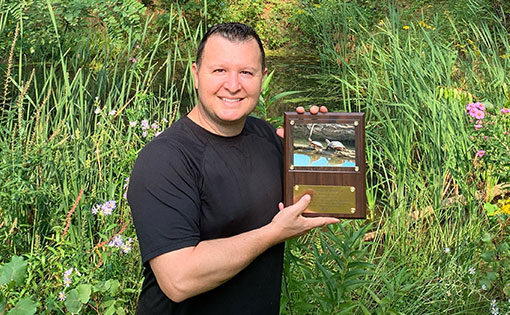
St. Clair County Parks and Recreation Commission has been a long time partner of St. Clair River restoration efforts in habitat restoration for the Blue Water River Walk and new Blue Water River Walk County Park. As a partner on these projects the Parks Commission contributed local match for the grant to build the 1-mile long paved path along the River Walk and also purchased adjoining land south of the River Walk and developed the new County Park. They continue to support these projects by providing maintenance and monitoring to these habitat sites, which guarantees their success.
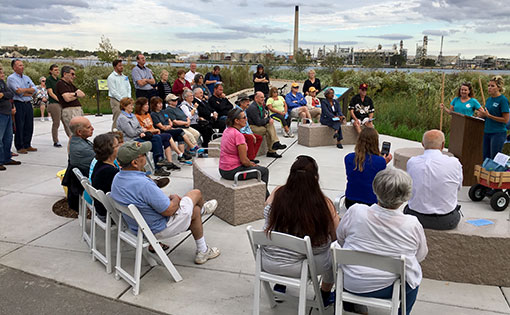
Under the guidance of Edward F. Roseman, Ph.D., Research Fishery Biologist with the U.S. Geological Survey Great Lakes Science Center and his entire Lake Sturgeon team, they are responsible for the building and monitoring of three fish spawning reefs in the St. Clair River. This has enhanced the St. Clair River’s habitat for several fish species, especially the lake sturgeon. They have taken Lake Sturgeon awareness and outreach from its infancy stage to a large-scale successful program. The Sturgeon in the Classroom program, Blue Water Sturgeon Festival and North Channel Sturgeon Classic are a few examples of projects that are successful due to close cooperation between non-profits and the USGS-GLSC. Their partnership is benefiting lake sturgeon conservation, increasing public awareness, improving data collection and stewardship of Lake Sturgeon efforts elsewhere throughout the Great Lakes.
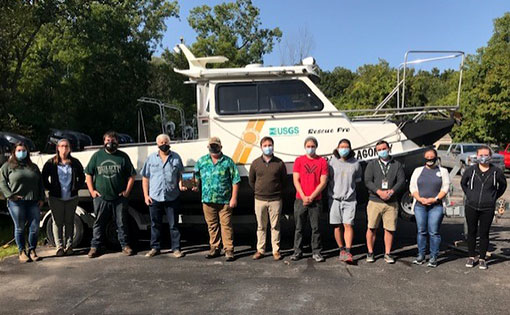
Our 2020 award recipients join a prestigious line-up of those who have worked tirelessly towards the goal of restoring the health of the St. Clair River.
- 2011 – Lisa Huntington
- 2012 – Dave Dortman; Clay Township Phragmites Board; Gregory A.D.; City of Port Huron
- 2014 – Community Foundation of St. Clair County; City of Marysville
- 2015 – Jim Lesnau & Celesta Brill; Jim Bloch; St. Clair County Health Department.; Cottrellville Township.; Huron to Erie Drinking Water Protection Network
- 2016 – Kay Cumbow; Kristen O’Reilly; Blue Water River Walk Stewards; Cargill Salt, Inc; Jeff Friedland
- 2017 – Bob Gross; Huron Lady II; U.S.F.W.S-Alpena Fish and Wildlife Conservation Office
